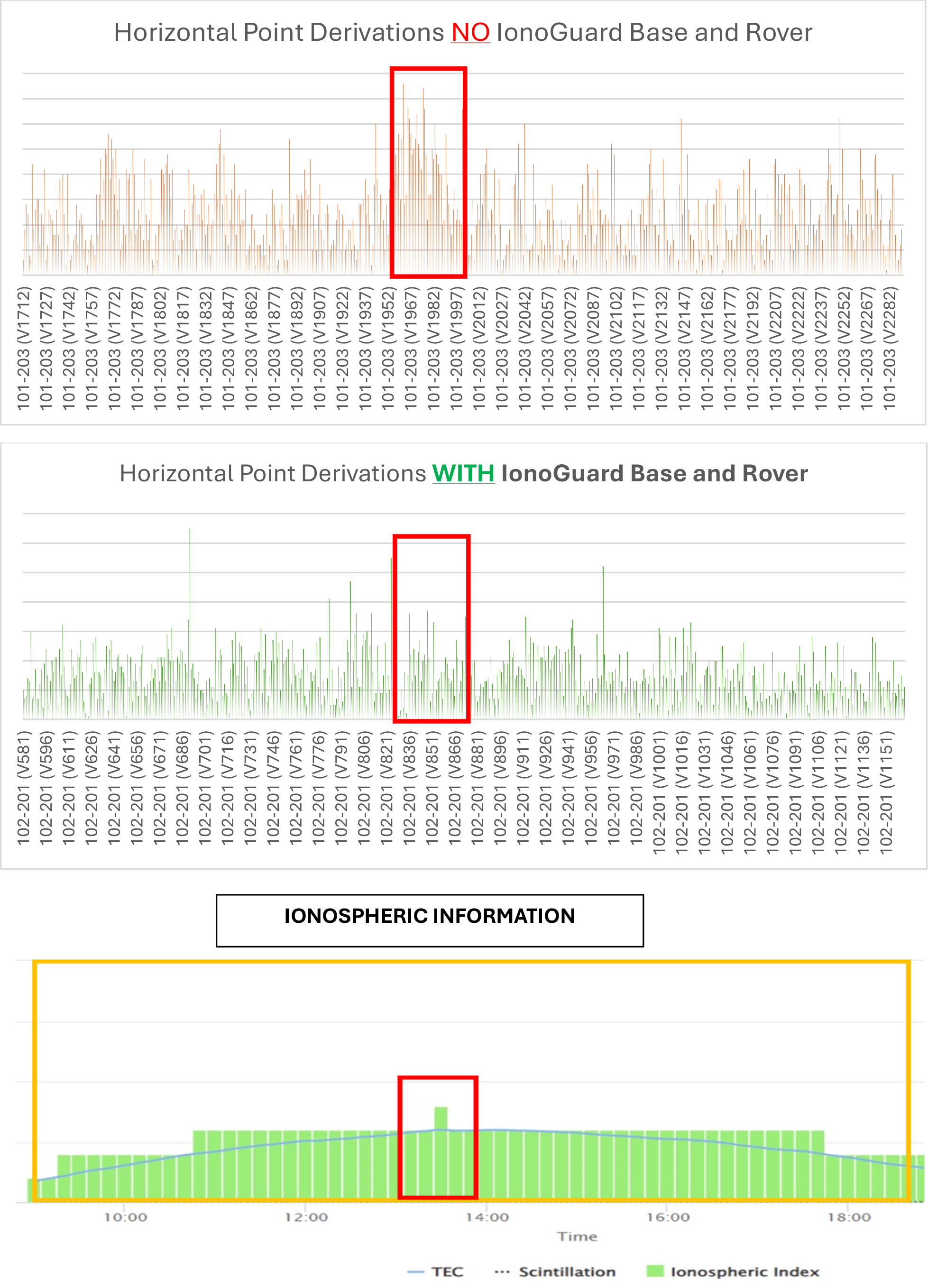
Solar activity peaks every 11 years – with the next maximum predicted in 2025. This has a direct impact on the stability of GNSS signals and can have a negative impact on precision.

As you travel farther north in latitude, like Alaska, we have seen projects that show good vertical precision, but elevation fluctuations throughout that day that exceed customer expectations. The repeatable accuracy suffers as you return to the same spot hours or days later and see a different elevation. Modern receivers with the ProPoint® GNSS Engine now have Trimble IonoGuard™ technology to mitigate these negative effects.
Utilizing a global network of GNSS stations, Trimble’s GNSS Planning Tool allows users to identify and plan around high ionospheric activity.
Trimble has taken further actions to ensure its customers GNSS accuracy and availability through the development of IonoGuard technology. An ongoing data collection campaign has provided GNSS and RF data to tune signal processing and RTK algorithms and deliver improved accuracy, availability and integrity. Diagnostic information indicating the real time level of ionosphere on each satellite together with historical data is presented in a user friendly graphical web interface.
IonoGuard technology in operation around the world has already shown significant improvements in positioning performance during the periods of high ionospheric activity. Users can feel confident that the superior performance of their ProPoint receivers has been further improved with the addition of IonoGuard ionospheric mitigation technology.
For more information, Click Here.

